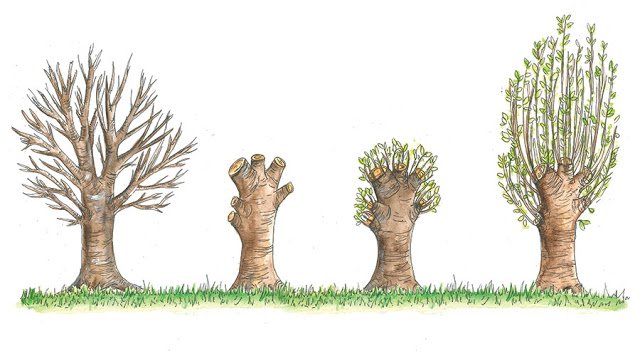Pollarding is a pruning system in which the upper branches of a tree are removed, promoting a dense head of foliage and branches. Traditionally, trees were pollarded for one of two reasons for fodder to feed livestock, or for wood. Deciduous trees and large shrubs respond best to pollarding.
Procedure for Pollarding of trees
Cutting off a tree’s branches right next to the main trunk is the way pollarding begins. The following year, new growth is cut just above the previous cuts. Sometimes gardeners leave three or five longer branches on the tree, cutting them back each year, too, so twiggy growth erupts from the cut ends. These branches provide more shade than the shorter branches.
Over time, the tree develops knobs or knuckles where it was repeatedly pollarded, and the new branches grow from only those knobs. It’s important not to cut into the knobs when pruning, and don’t cover the tree’s cuts with wax or a commercial tree wound product. A tree heals faster if the cuts are exposed to air. Clean pruning tools with rubbing alcohol between cuts to avoid spreading plant diseases.
Time of Pollarding
Pollarding is done annually or every other year and needs to start when a tree is still young, once it has reached the desired height. When a tree is pollarded, the process needs to be done over and over again for the rest of the tree’s life because it makes the tree grow slowly. pollarding should be done in late winter or very early spring, when the tree is dormant. The worst time to pollard is in fall because fungus is more apt to enter the cuts then.
